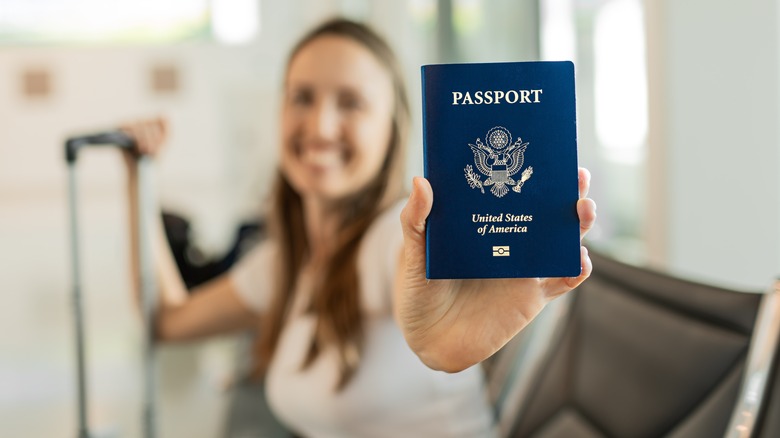A Guide To Visa-Free Traveling For American Citizens
The American passport is one of the most powerful in the world, coming 10th in the 2025 VisaIndex ranking. For American citizens, it's more than just a travel document, but a key to the world, granting visa-free travel to almost 200 countries. This makes spontaneous getaways and long-term travel possible for its passport holders.
While the freedom to travel is a major advantage for those with the eagle-emblazoned travel booklet, understanding the specifics of where you can travel to and for how long without a visa can be confusing. Rules vary from country to country, and documentation requirements can change due to increased security measures or political conflicts. Therefore, doing your research is crucial. This guide will break down the countries in the world that are visa-free for Americans, as well as offer some travel tips and mistakes to avoid in order to help you make the most of your passport's potential.
Where can Americans travel to without a visa?
In total, U.S. citizens can travel without a visa to 140 countries, plus another 43 where Americans are eligible for a visa on arrival or an ETA. This makes for 183 easily accessible countries across Africa, Asia, Europe, North America, South America, and Oceania. Major visa-free destinations from this list include Mauritius, South Africa, Japan, Thailand, France, Ireland, Canada, Mexico, Argentina, Colombia, Fiji, and New Caledonia. Keep in mind that, contrary to previous entry requirements, the United Kingdom now requires an electronic travel authorization (ETA) as of January 8, 2025 for Americans visiting or passing through. While an ETA is not exactly a visa, it does provide extra vetting for visa-exempt travelers on a short-term stay.
So, why do some countries require a visa for American citizens and others do not? It mostly comes down to a country's limitations on immigration, as well as vetting protocols for foreign nationals entering. Of course, there are instances where historical and political sanctions prohibit Americans, specifically, from visiting as tourists, as is the case in Cuba. But in general, countries impose visa rules on most foreigners in order to control their borders, like Australia, which requires Americans to obtain either a visa or an ETA before arriving. Other major countries that require visas for American visitors include China, India, and Vietnam. Moreover, there are also countries where Americans can obtain a visa upon arrival, giving tourists more options when making last-minute travel plans.
The countries that permit Americans to enter without a visa generally have reciprocity agreements — a give-and-take pact where citizens of both countries can engage in cultural exchange via tourism. With 183 countries taking part in this agreement with the United States, it demonstrates the country's powerful allyship with other global nations and the overall strength of the American passport.
How long can Americans stay in another country without a visa?
Whether you plan on taking a hiatus from work to embark on a world tour, or you work remotely and want to take your laptop with you as you explore an entire continent, there are plenty of travel options — just make sure you know how long you can legally stay in each country. Every country has its own set of requirements and duration-of-stay limits for tourists, so ensure you're familiar with each country's rules. For example, Americans can stay without a visa in Peru for 180 days, but can only stay 30 days in the Philippines without a visa.
Furthermore, there is a lot that travelers should know about visiting Europe's Schengen Area before arriving there. While the Schengen Area is made up of 29 European countries, and is a visa-free zone for American visitors, travelers should consider this area as one entire country in terms of how long you can stay without a visa. In other words, if you stay 90 days in France, which is part of the Schengen Area, you cannot spend another 90 days in Germany, which is another Schengen country, within the same six-month period. The maximum time limit doesn't reset if you travel to another country within this visa-free zone. To accurately monitor your time spent in the Schengen Area, download the Schengen Simple app, or review the Passport Index — also available as an app to download on your phone — to check the maximum stay for American passport holders in every country around the world.
Don't make these mistakes if traveling to a visa-free country
Even if you're exempt from obtaining a visa as an American citizen when traveling to specific countries, you still need to ensure you're not overlooking other required documentation. Many countries on the visa-free list for American travelers look for vaccination proof at immigration and customs, such as Ecuador, which requires travelers to show their yellow fever vaccination certificate if coming from an infected area, such as Peru. This is especially crucial to know if embarking on a South American trip.
Meanwhile, other countries expect your passport to be valid for at least six more months from the date of entry, like Singapore and the United Arab Emirates. If you need a new passport before your next trip, check out our tips for the best time and easiest way to renew your passport. Immigration officers may also ask for proof of onward travel and accommodation to ensure you don't intentionally overstay your visit, as in Italy. Some countries even look for travel insurance.
Finally, if you're connecting to a visa-free country via a non-visa-free country, don't make the mistake of not getting a visa for the connecting country. Let's say you're stopping off at New Zealand for a few days on the way to French Polynesia — a visa-free destination for American passport holders — you'll need to present either a visa or an ETA at border control in New Zealand before entering. Some countries even require visas if you're just connecting and don't even leave the airport, particularly if it's a self-transfer flight, so always do your due diligence to avoid a cog in the wheel of your trip.



